Quarantine has done some strange things to us all but one of the good things that has come from it is that people have gone back to sewing more and it’s exciting to see what people are creating.
Whether it be a creative project, mending or making practical items for use around the home, it’s been nice to see my favourite past time becoming more front and centre.
I’ve designed a double-sided tissue box cover pattern, so that you can make themed covers for all of your tissue boxes and if you want to make them extra useful make one side one holiday and the inside another. Or if you’re like me just make them all your favourite theme.
Materials
1 – 15.5″ x 10″ rectangle of your outside fabric
1 – 15.5″ x 10″ rectangle of your inside fabric
2 – 4.5″ x 5.5″ squares of your outside fabric
2 – 4.5″ x 5.5″ squares of your outside fabric
1m approx of piping cord size 2
2in strip of fabric for piping
Interfacing is optional – if you do decide to use interfacing cut one rectangle and two squares. Iron onto the wrong side of your outer fabric. I used a very lightweight fusible vilene (one suitable for stitcheries).
Assembly
Cut out the pieces as listed above. Iron on interfacing if you chose this option.
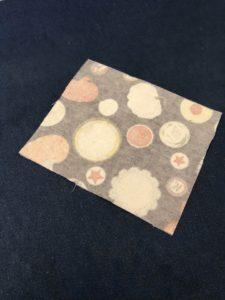
Place the two 15.5″ x 10″ rectangles right sides together.
Fold in half and press, find the centre (5″) and then draw a 1″ rectangle around it that measures 2.5″ either side of the centre mark. 5″ x 1″ box.
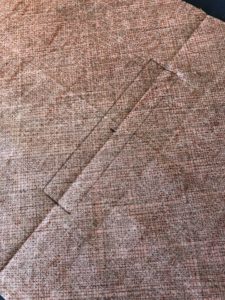
Stitch on the line, reversing at the start and stop points. Trim your threads.
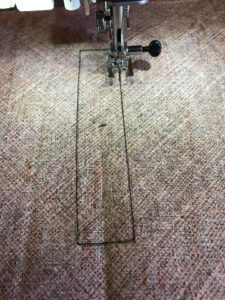
Cut the centre of the box along the centre line and then angle out into each corner, careful not to cut your stitching.
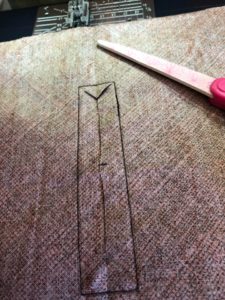
Turn the fabric through to the right side.
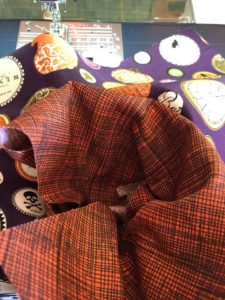
Roll the seams out so they are flat and press.
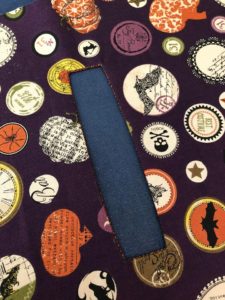
Top-stitch around the edge with a co-ordinating thread. Seam allowance is up to you to choose – mine was 1/8″.
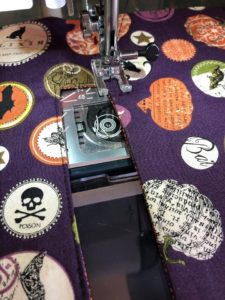
Trim the edges.
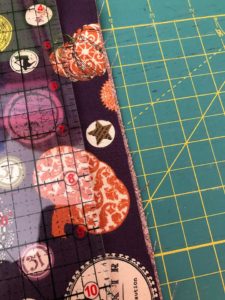
Find the centre of the edge of the fabric and finger press. Then find the centre of the side panels and line them up. Pin in position. Do the same for both the outer and inner fabrics.
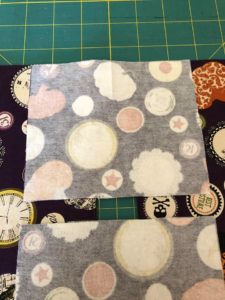
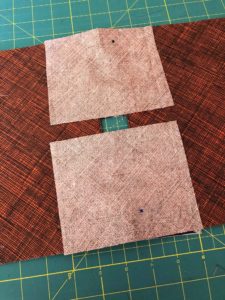
Stitch a 1/4″ seam leaving the seam open at the start and stop 1/4″. See pencil mark. Make sure you keep the inner and outer fabrics apart.
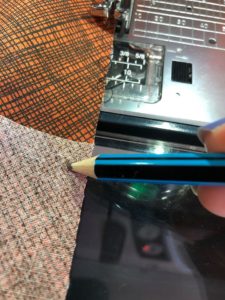
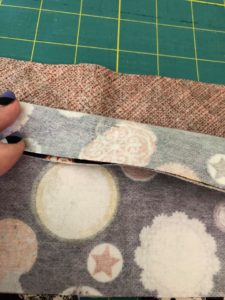
Pin the 4.5″ x 5.5″ side sections to the main panel and finish the seams. You will have an overhang of approx 1″ of the main panel. Don’t worry about this yet. Pin all four sides of the inner fabric and finish the seams with a 1/4″ seam.
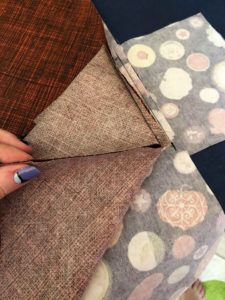
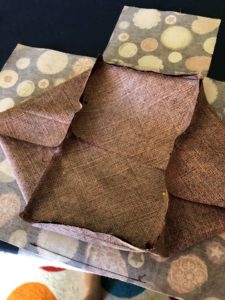
Repeat for the outer fabric.
Then trim the overhang of the main panel to match the side panels of both fabrics.
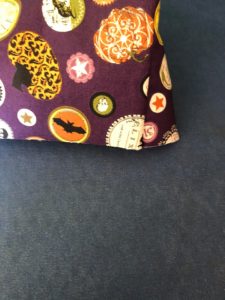
Fold up a small seam and press. Do this for both inner and outer fabrics.
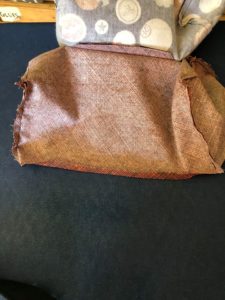

Make piping – fold your 2in strip of fabric in half, lay the piping cord in the centre. Set your machine up with its piping foot and move the needle to the furthest right-hand position. Make the full length of the strip and don’t reverse at the start and stop as we will need to open it a bit to finish it off at the end.
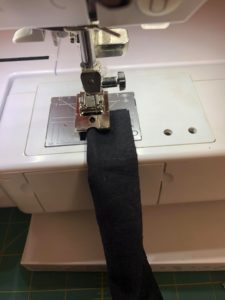
Pin piping into position all the way around the edge, leaving a tail to finish the ends. Pin so that both the inner and outer fabrics butt up against the round edge of the piping.
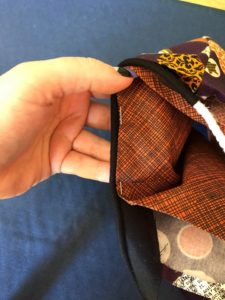
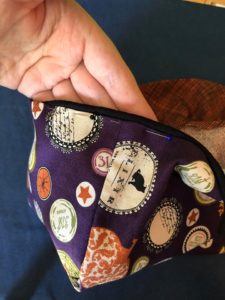
Stitch the piping on, this time moving the needle to the left and removing pins as you go. If you need to ease any of the inner fabric aim it for the corners or where your piping joins. I had some slight movement due to my interfacing stretching.
When you get to the end, pull the piping cord out of the piping casing and trim away the excess cord. You want the piping cord to curve into the seam and flatten out a bit so you can fold the ends over each other and down into the seam. Line up the piping so the two ends overlap. Trim away the excess of the piping cord fabric. Finishing stitching and do a little reverse stitch. Trim your threads.
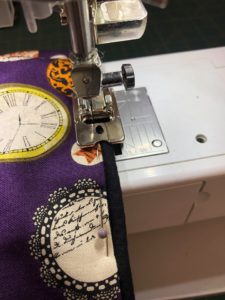
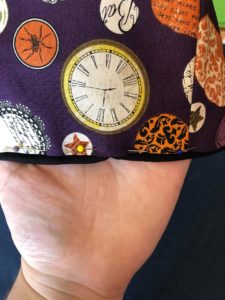
One reversible tissue box cover. Enjoy!
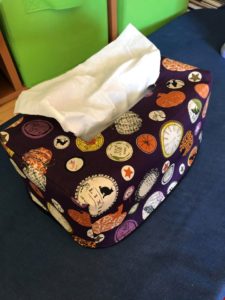
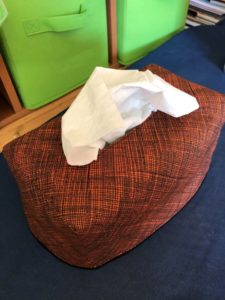
I’d love to see if you make any of these. Please feel free to share on Instagram with the hashtag #Frankiestissueboxes
Happy sewing!
Marni x